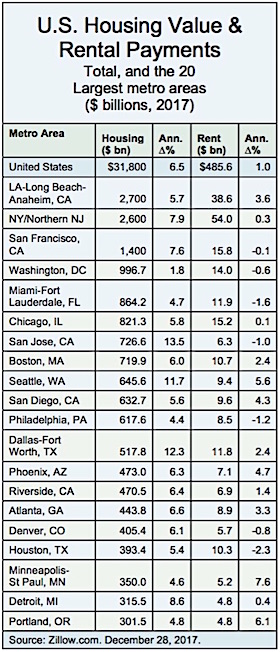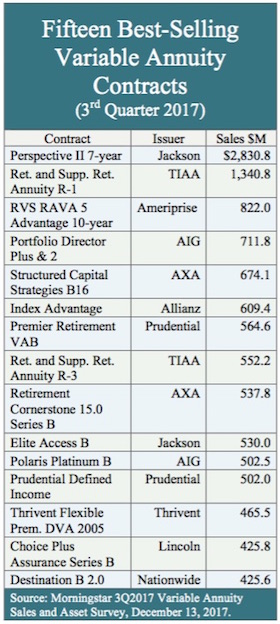
Tax considerations underlay politicians’ drive to “Rothify” defined-contribution (DC) retirement saving accounts, switching them away from traditional defined-contribution (DC) retirement saving accounts. Rothification would have brought higher tax revenues today and lower tax revenues decades from now when today’s members of Congress are long into retirement or gone.
Money contributed to traditional accounts is pre-tax money, but subject to tax when withdrawn, whereas money contributed to Roth accounts is after-tax money, not subject to tax when withdrawn.
You can see the difference in a simple example: Consider Jane, a 25-year-old contributing $1,000 pre-tax to a traditional account. Her current income places her in the 20% tax bracket. This implies that Jane pays $800 out of her pocket, taking into account the $200 “tax rebate” she receives, yet has the full $1,000 in her account.
That $1,000 compounds to approximately $13,765 at an annual 6% return during the 45 years until she retires at 70. Imagine that Jane’s tax bracket in retirement is also 20%. The after-tax amount Jane receives when she withdraws the money is 80% of $13,765, approximately $11,012.
Now consider John, another 25-year-old under the same circumstances, contributing $800 after-tax to a Roth account. The amount compounds to approximately $11,012 at age 70 and is tax-free when withdrawn.
In this case, Jane and John do equally well, contributing the same after-tax amount at age 25 and collecting the same after-tax amount at age 70.
The usual argument in favor of traditional accounts is that marginal tax rates are likely lower at age 70, in retirement, than at age 25, when employed. Yet this is not always true. Low-skill employees might be at a low or zero tax bracket at age 25 and remain so in retirement.
High-skill employees might be at low tax brackets at age 25, at the beginning of their careers, but at higher tax brackets at age 70, in retirement, when Required Minimum Distribution (RMD) rules compel them to begin withdrawals from possibly fat traditional accounts, and pay taxes on these withdrawals.
Why, then, did so many in the financial services industry object so strenuously to Rothification? A cynic might note that members of the industry who charge fees on $1,000 in traditional accounts when employees are 25, increasing to about $13,765 at age 70, collect more fees than when they charge fees on only $800 in a Roth account when employees are 25, increasing to about $11,012 at age 70.
Rothification would have disadvantaged well-off employees at high tax brackets, such as professionals at the peaks of their careers, who might be at lower tax brackets in retirement. Yet, such employees have both the financial means and self-control necessary for adequate retirement savings.
I do not worry much about their prospects for adequate retirement income. I worry much more about poor employees and employees at the beginning of their careers. Rothification would not have affected them much.
Moreover, there is evidence that employees are pretty oblivious to tax considerations when they save, whether in traditional accounts or Roth accounts. If so, they might not have reduced much the amounts saved from $1,000 to $800 when Rothified.
Instead they might have contributed $900 or perhaps even $1,000 to a Roth account, increasing their overall retirement savings and prospects for adequate retirement income.
Objection to Rothification was one indicator that current DC plans were designed by well-off people for fellow well-off people. Consider the common feature of employer “matching,” where employers contribute a percentage of employee income, such as 3%, but only as a match to an equal contribution by an employee.
Matching works well for well-off employees who have the financial means and self-control necessary to contribute even more than the 3% necessary for a match. But it does not work well for poor employees who lack the financial means and self-control to do so.
What is more, lack of financial means hampers self-control, as the poor are overwhelmed by many financial demands, from children’s care to utility bills and car repairs. Moreover, many low-income employees lacking the means necessary for a contribution qualifying them for a company match, borrow that amount, possible at high interest rates, nullifying much of the benefit of a company match.
A cynic might say that companies introduced the matching feature to do what it actually does — shortchange poor employees by diminishing company contributions, under the guise of motivating such employees to save.
Consider an analogy to matching in coupons issued by companies, such as Procter & Gamble for Tide detergent. A 50-cent coupon is not likely to entice a person with ample income and scarce time to clip the coupon and carry it to the supermarket.
But it is likely to entice a person with scarce income and ample time. This way, P&G engages in “price discrimination,” selling the same detergent at a higher price to well-off people and a lower price to poor people who would buy a cheaper brand if not for the coupon. P&G would not engage in the coupon practice if all people redeemed them.
Companies offering matching engage in an analogous practice, where well-off people “clip” the employer-match “coupons,” whereas the poor do not. Some employers, perhaps many, would reduce their match if all employees were to clip and redeem employer-match coupons.
Some companies, especially not-for-profit ones such as universities, offer “matchless” contributions. I wish all companies adopted this practice.
While on the topic of employer contributions, it is important to note that the employer switch from defined benefit (DB) pension plans to DC retirement saving plans had two effects, one regularly highlighted and one generally overlooked.
The highlighted effect is the shift of risk from employer to employee, such that, for example, employees now bear the risk of stock market crashes. The second effect is a vast reduction in employer contributions to employee retirement savings.
The current average employer contribution in DC plans is approximately 4% of salaries. But it was double that percentage, or more, in DB plans. One marker of the decline in the power of employees relative to employers is the current practice of beating up employees for saving too little, while giving a free pass to employers who contribute little.
Meir Statman is the Glenn Klimek professor of finance at Santa Clara University’s Leavey School of Business and the author of, “Finance for Normal People: How Investors and Markets Behave.” The article is reprinted here with permission from the author.






 Now Voya is out of annuities altogether. I haven’t talked to Voya’s folks since October, but I wonder if it’s a coincidence that its announcement came one month after reports that FIA sales for the third quarter of 2017 were down 12.6% from the previous quarter, and down 10.5% from the same period in 2016.
Now Voya is out of annuities altogether. I haven’t talked to Voya’s folks since October, but I wonder if it’s a coincidence that its announcement came one month after reports that FIA sales for the third quarter of 2017 were down 12.6% from the previous quarter, and down 10.5% from the same period in 2016.


 OregonSaves, which has completed two pilot programs and will start formally in just 10 days, is the farthest along of about a dozen proposed state-sponsored plans. The plans are intended to address the fact that, at any given time, tens of millions of American workers, especially minority workers at small companies, have no way to save for retirement at work.
OregonSaves, which has completed two pilot programs and will start formally in just 10 days, is the farthest along of about a dozen proposed state-sponsored plans. The plans are intended to address the fact that, at any given time, tens of millions of American workers, especially minority workers at small companies, have no way to save for retirement at work.



